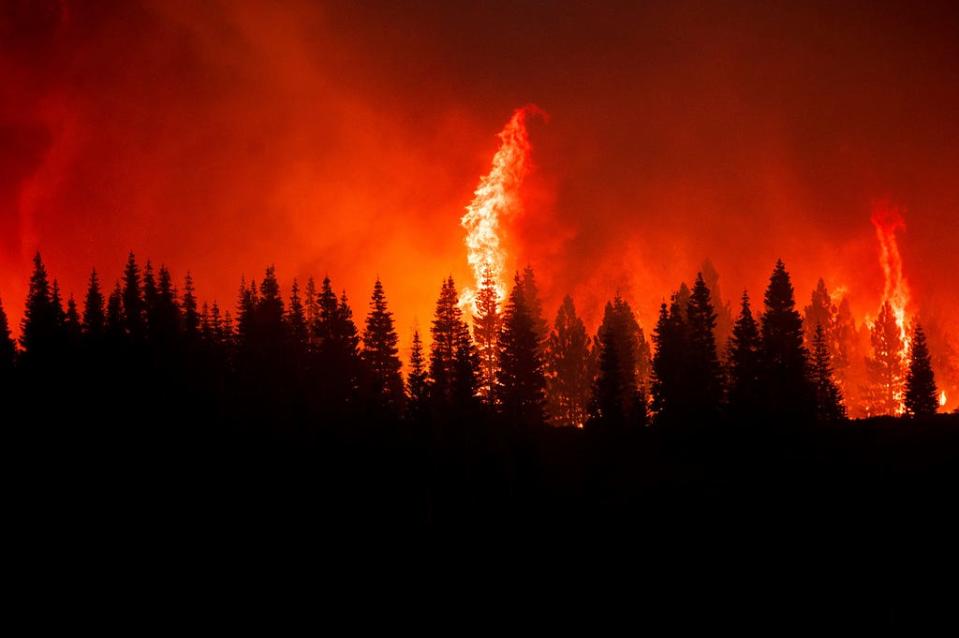More wind, higher temps could worsen California's largest wildfire; East Coast sees more smoky skies
Firefighters battling California's largest wildfire hoped cooler temperatures and other conditions would work in their favor Tuesday before more winds and higher temperatures later this week possibly strengthen the blaze.
The Dixie Fire, which combined with the Fly Fire in the eastern portion of the 312-square-mile inferno, has burned nearly two dozen structures but is threatening more than 10,000 others in Butte and Plumas counties, according to Cal Fire. The fire is only 22% contained.
Thick smoke on Monday helped shade the area, where more than 5,000 firefighters are fighting the flames. But if the smoke clears out Tuesday, the fire could grow, according to the U.S. Forest Service.
Conditions are expected to worsen this week. There is a chance of thunderstorms into Wednesday followed by increased winds and higher temperatures, the Forest Service said.
“It has been burning in extremely steep canyons, some places where it is almost impossible for human beings to set foot on the ground,” said Rick Carhart, spokesman for the California Department of Forestry and Fire Protection, on Monday. “It’s going to be a long haul.”

The Dixie Fire is one of 85 large fires burning 1.5 million acres, or about 2,343 square miles, across 13 states in the West, according to the National Interagency Fire Center.
Temperatures in parts of the northern Great Basin and Northern Rockies could reach record highs Tuesday, and the risk of lightning in California, Nevada and Idaho raised concerns. Much of eastern Montana remained under an excessive heat warning Tuesday, though most of the blazes were in the western part of the state.
The effects of the fires could be felt across the country, as some East Coast cities saw hazy, smoky skies Monday. That prompted air quality alerts in parts of New England, about a week after similar conditions were felt across the region.
In parts of Montana, Washington and Idaho on Monday, multiple fires also produced pyrocumulus clouds, or "fire clouds," the National Interagency Fire Center said.
On Monday, four firefighters in Montana were released from the hospital and one remains in a burn treatment center. The firefighters were building a defensive line at the Devil’s Creek Fire in Garfield County when winds shifted suddenly and blew flames back at them. Nineteen fires are burning in Montana.
From fire clouds to fire tornadoes: Here's how wildfires can create their own weather
'Going to be a long haul': Massive Dixie Fire merges with Fly Fire, tears through small town as California burns
Southern Oregon's Bootleg fire remained the nation's largest, burning over 625 square miles in the Fremont-Winema National Forest.
Lightning sparked the fire, which has since burned at least 70 homes and forced some 2,000 residences under evacuation orders.
Firefighters there were hopeful for some better conditions to bring light rain, higher humidity and lower temperatures, which could help alleviate the burning.
Oregon Gov. Kate Brown said the impact of climate change was being felt "in real time" as the fires burn. Scientists agree that warming temperatures and more intense weather have led to the conditions that worsen wildfire seasons in the U.S.
Contributing: John Bacon, Doyle Rice and Christal Hayes, USA TODAY; The Associated Press
This article originally appeared on USA TODAY: Dixie Fire may worsen as temps increase; smoke affects East Coast

